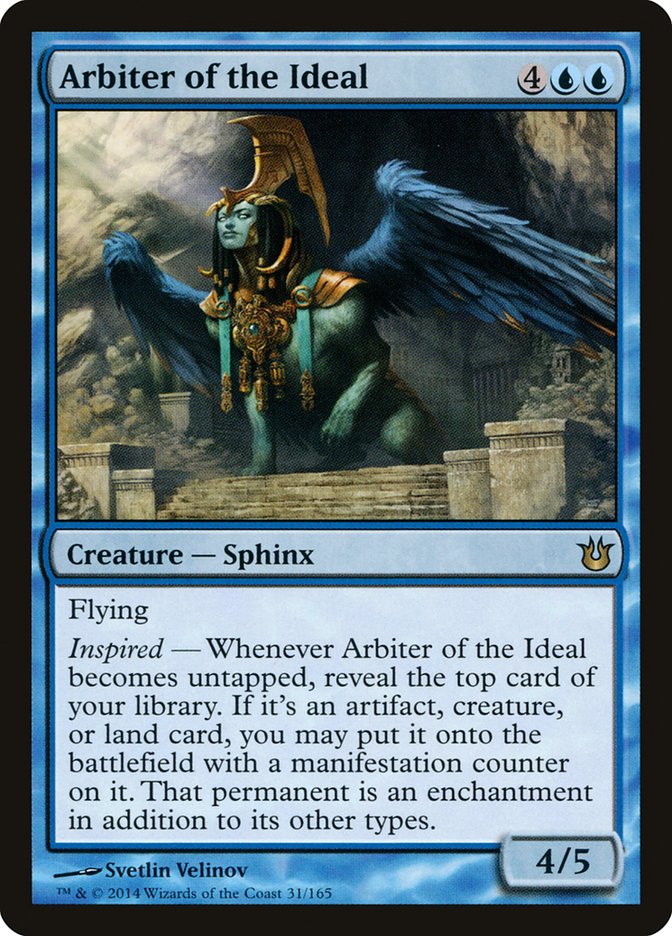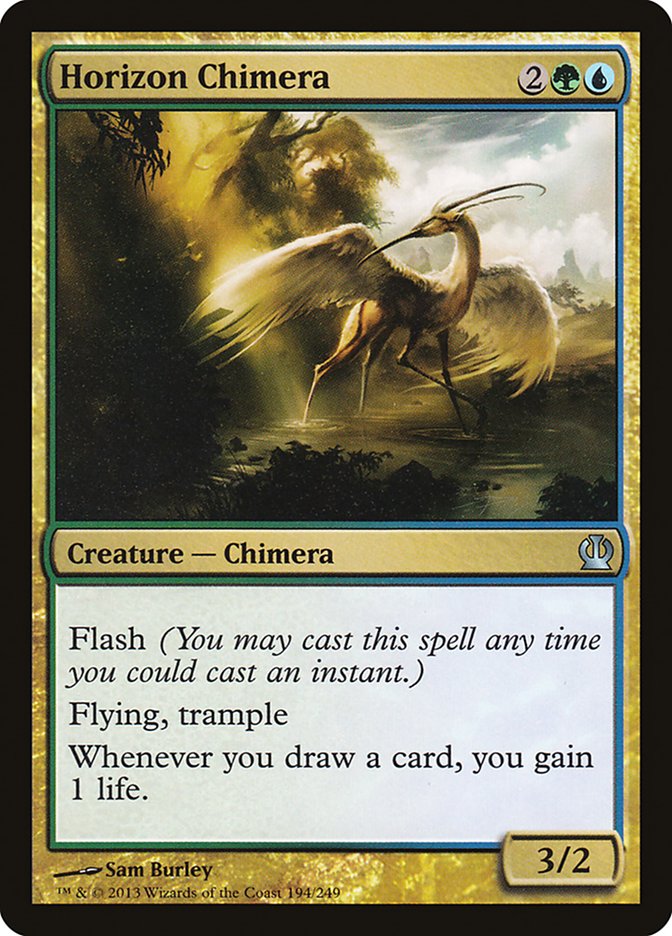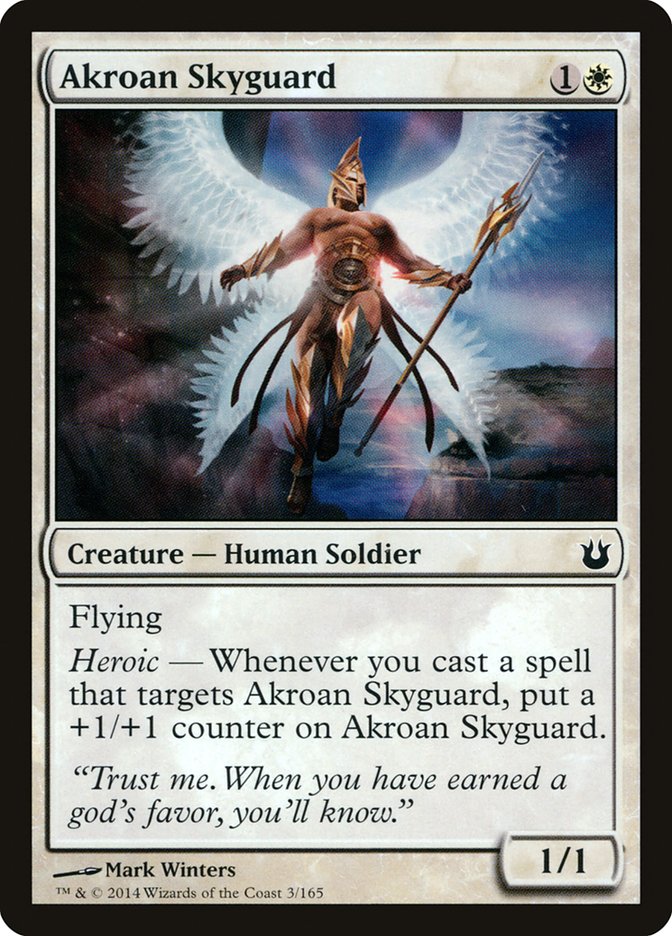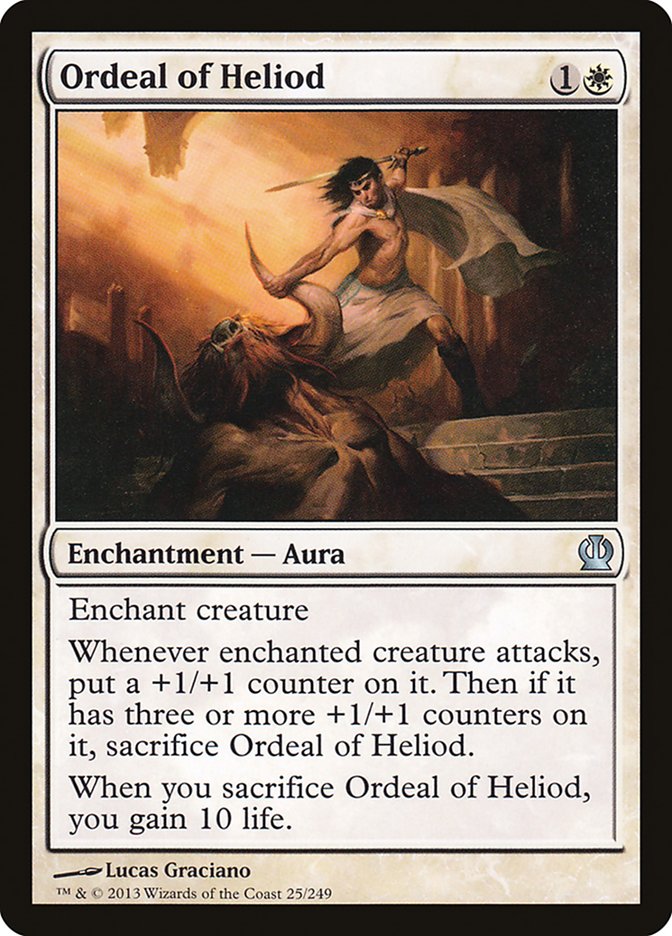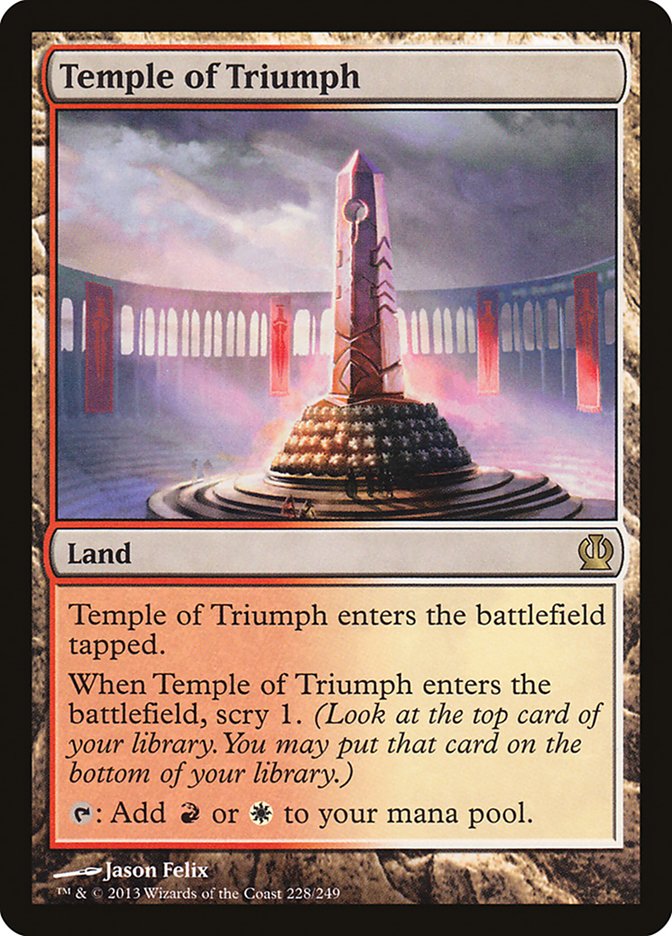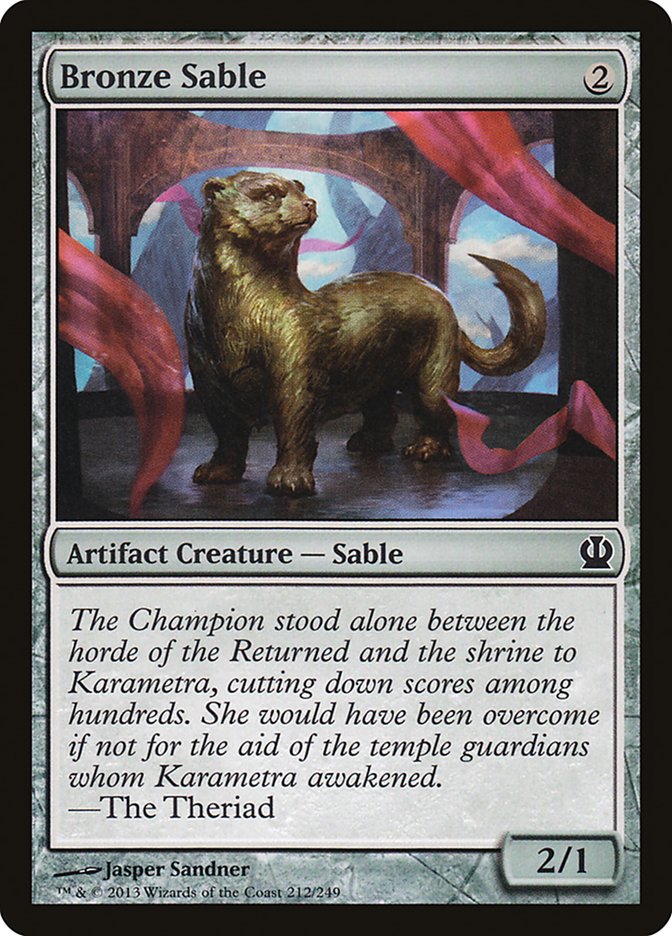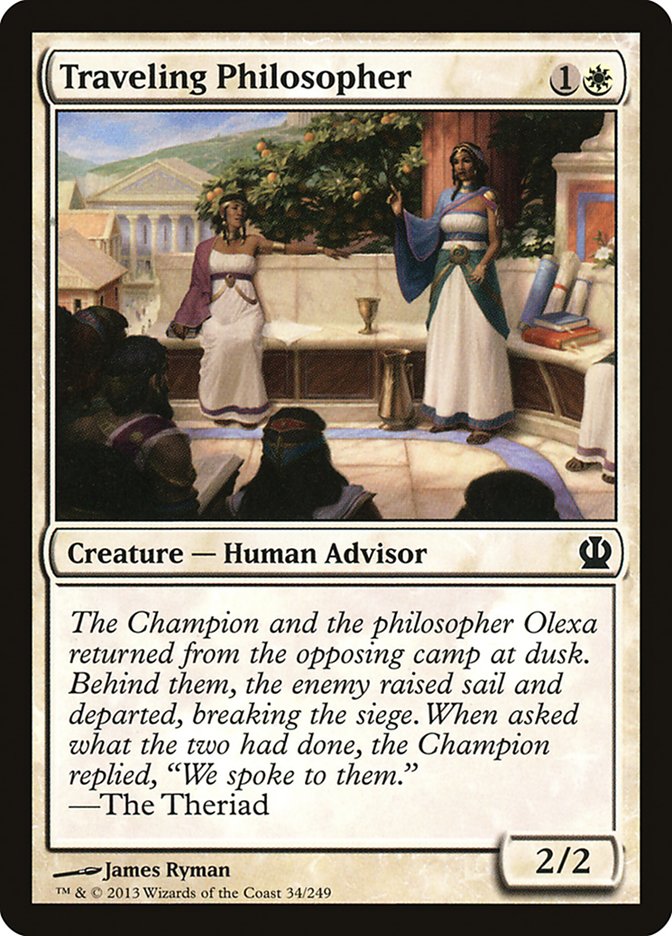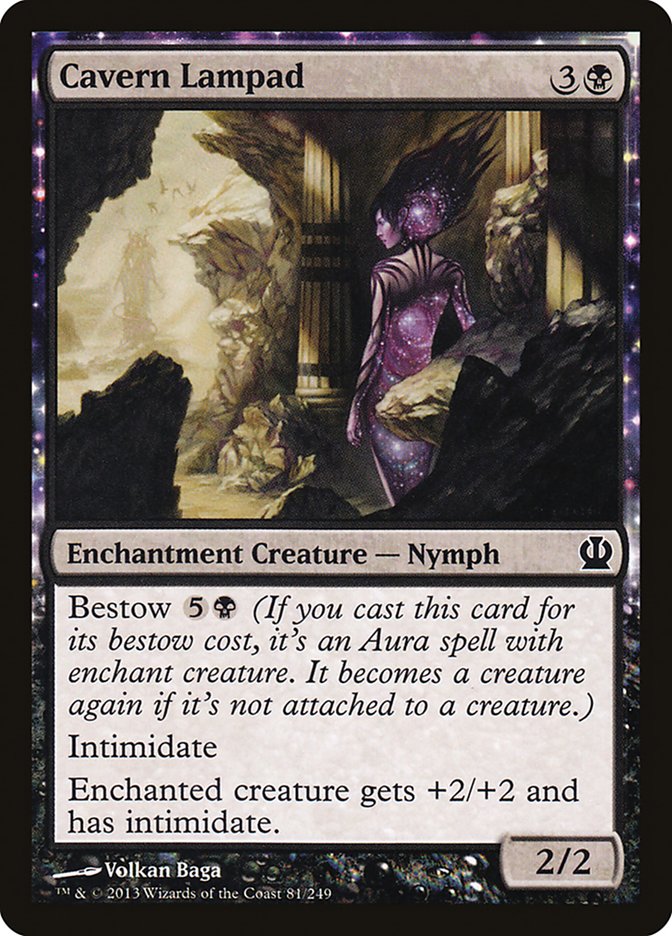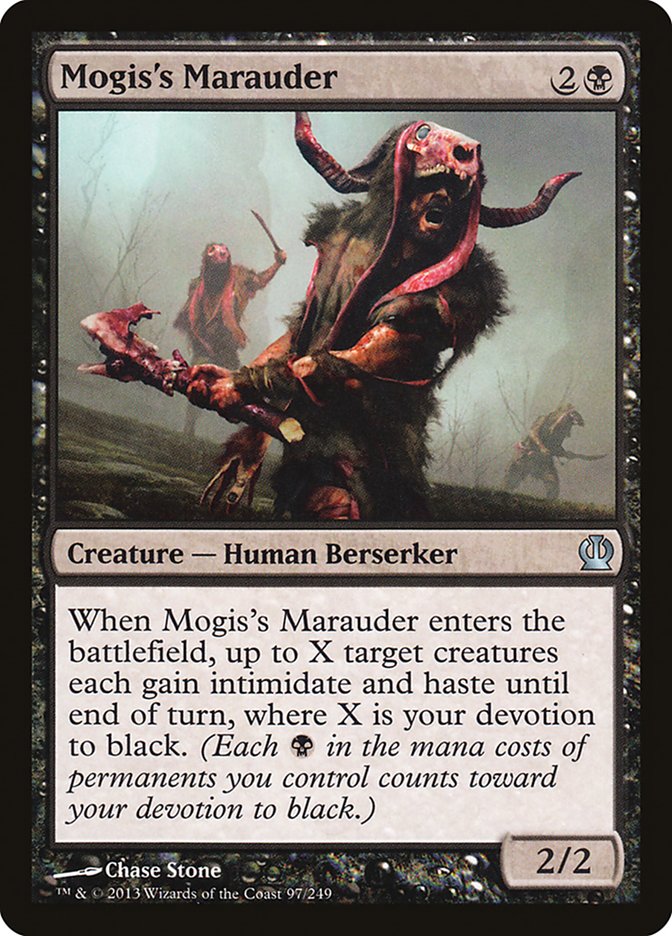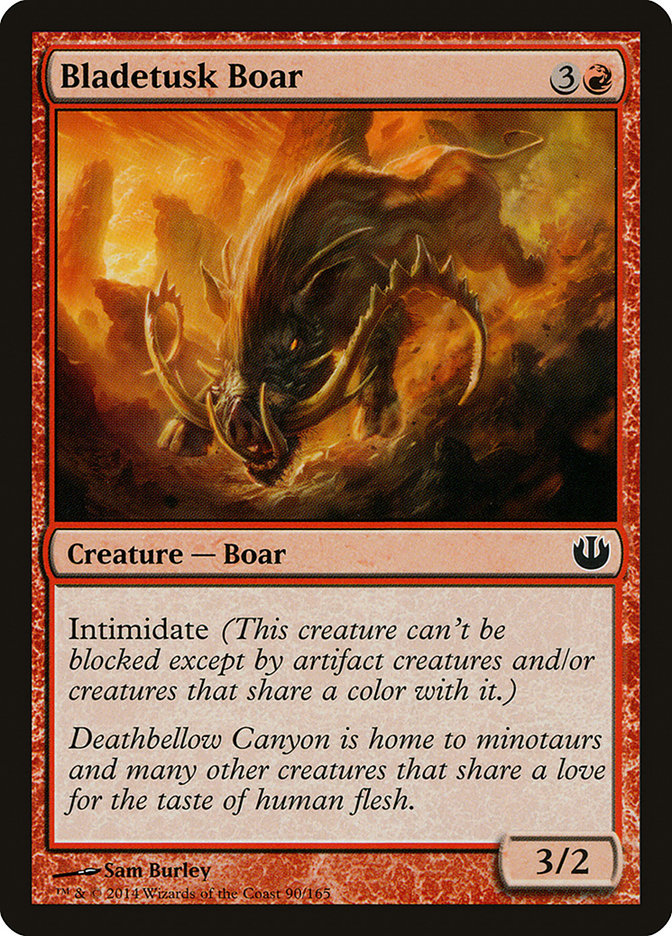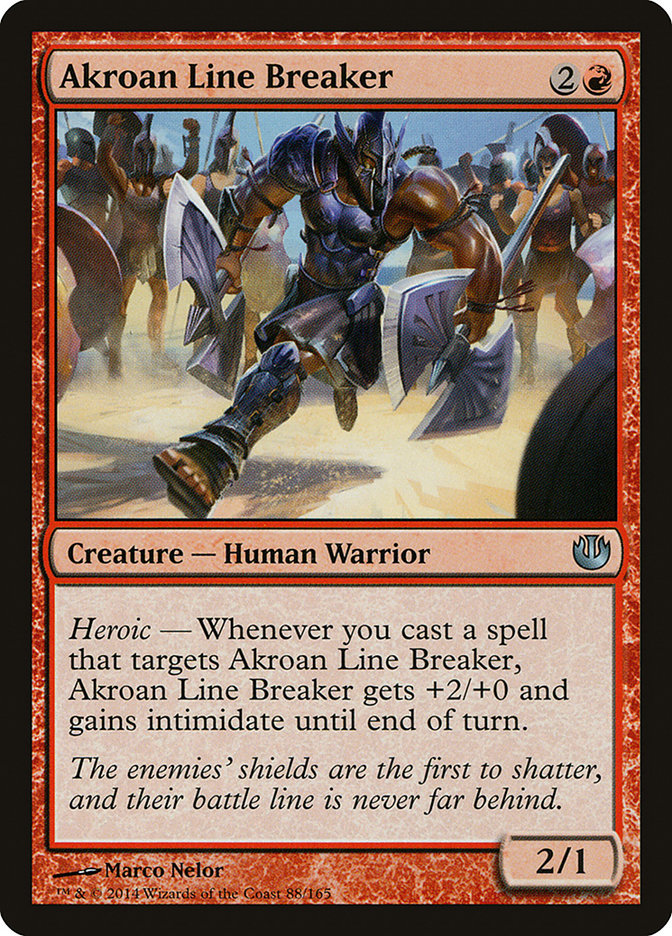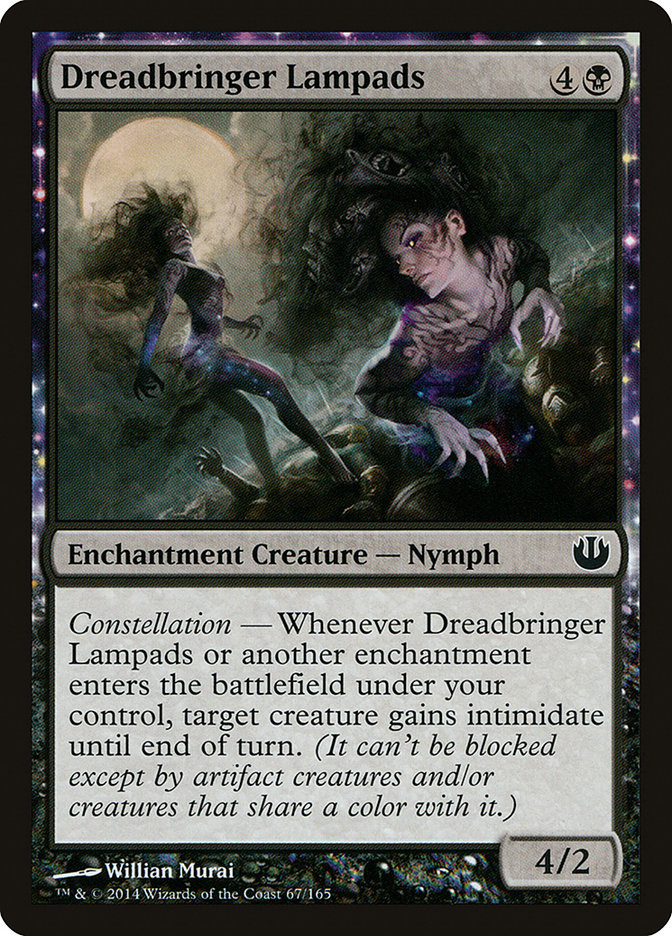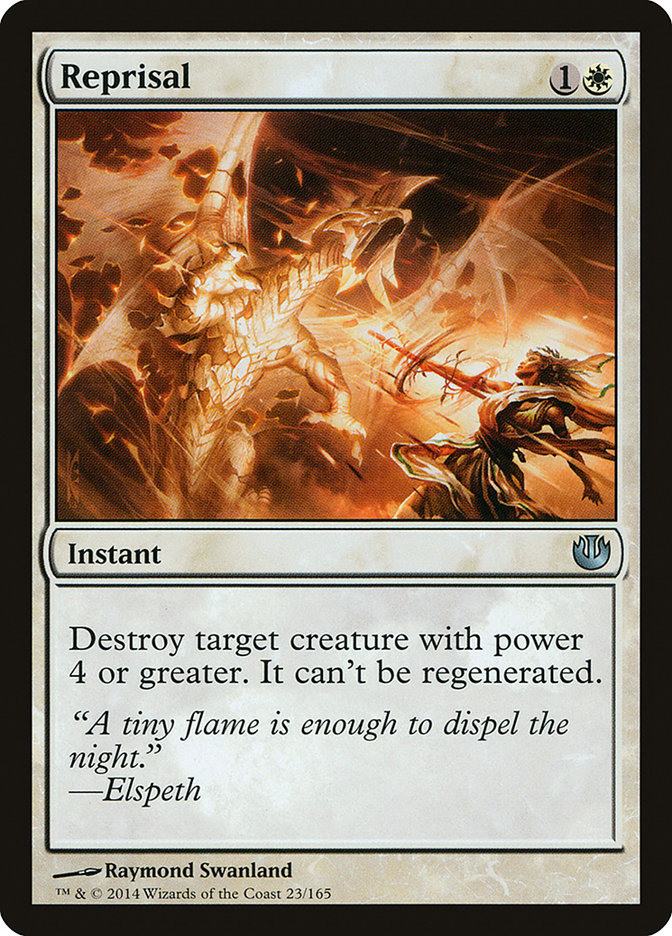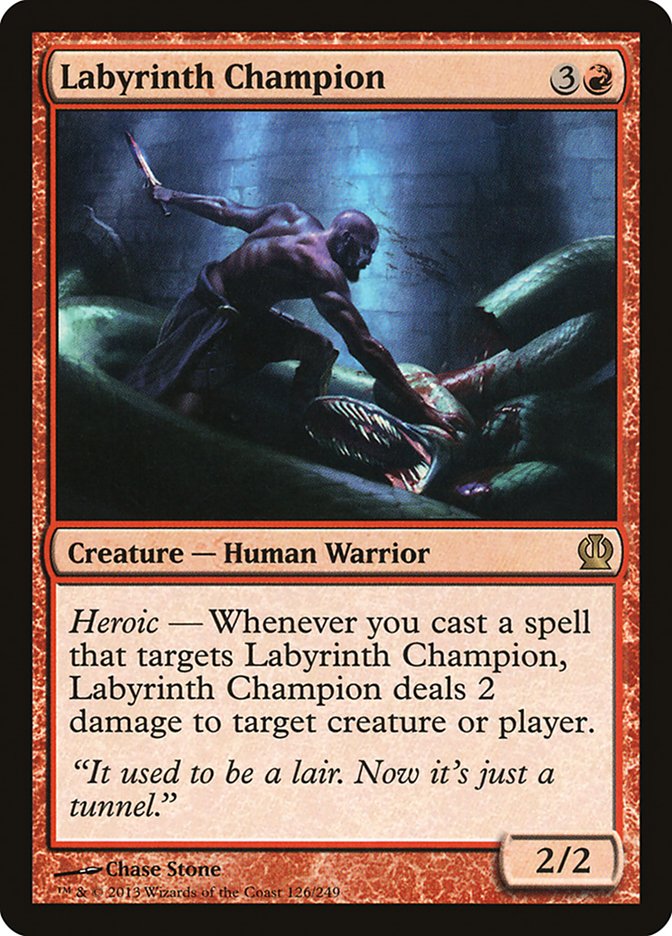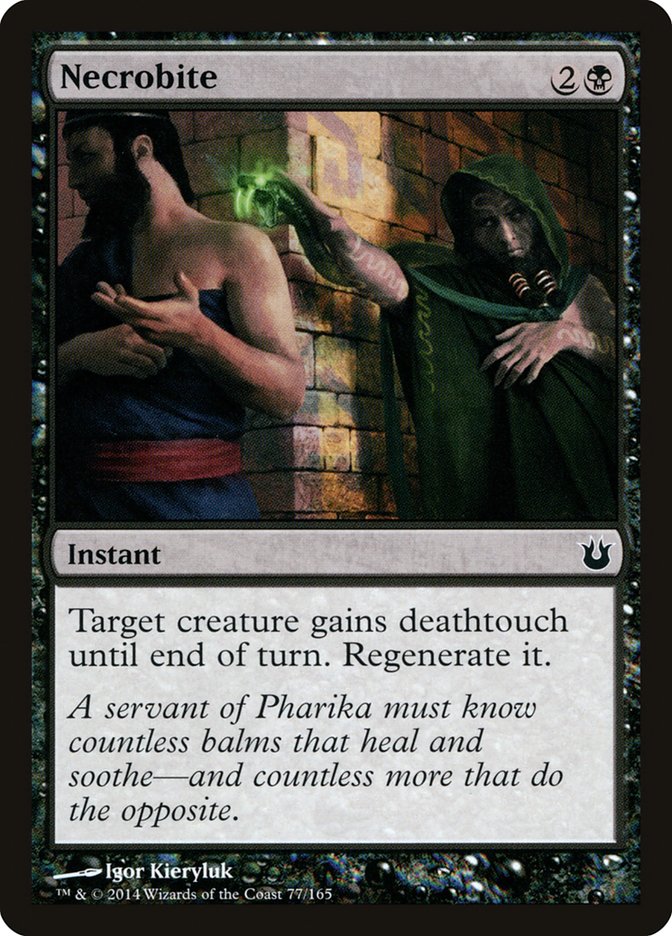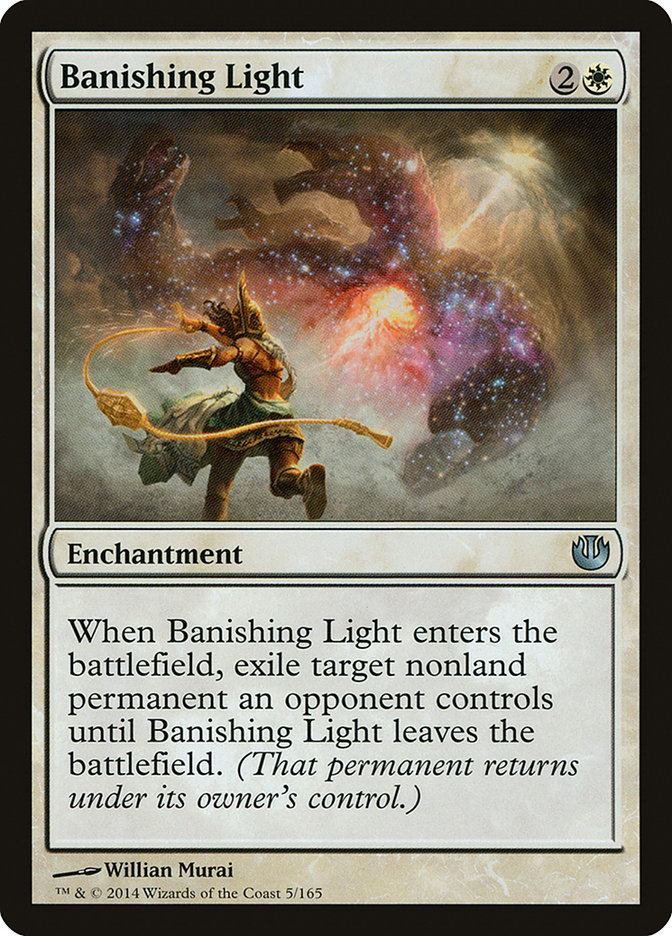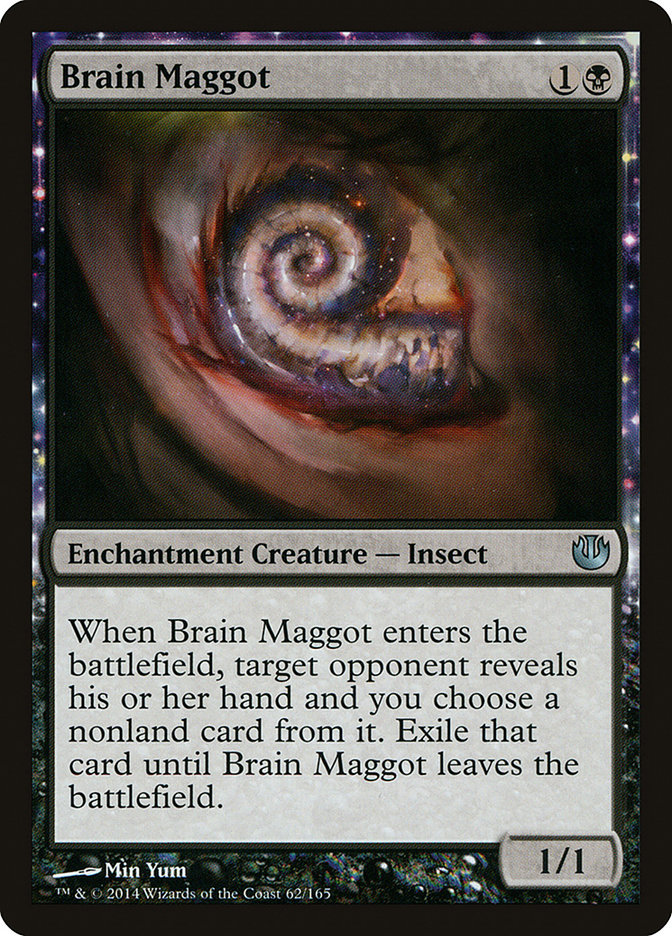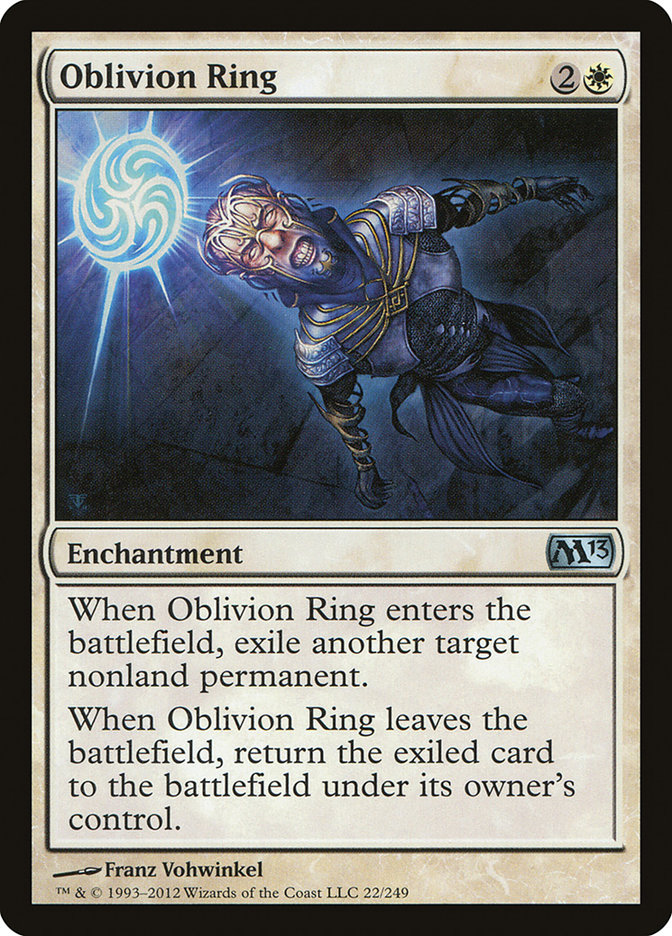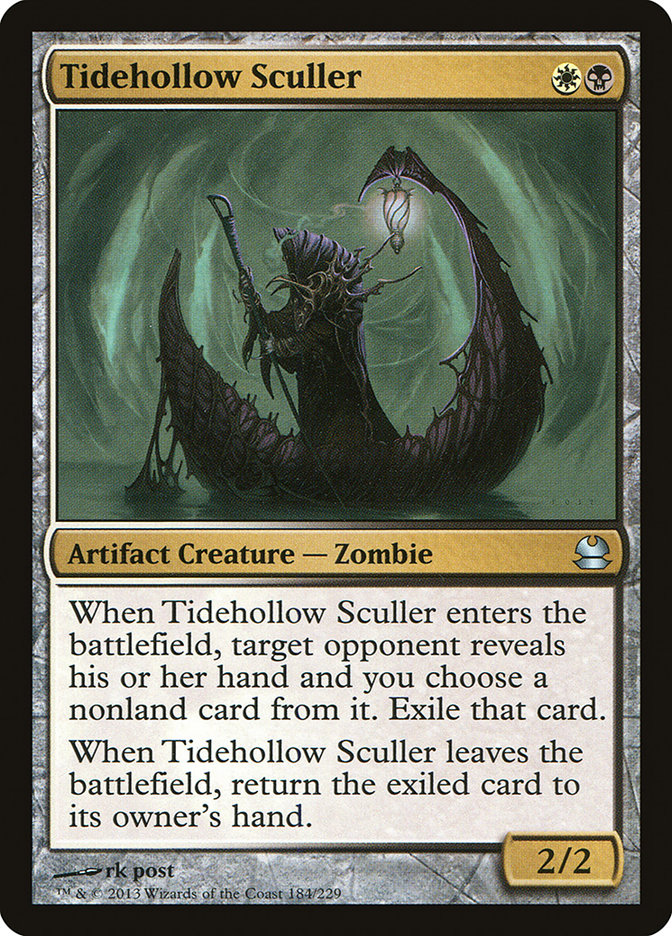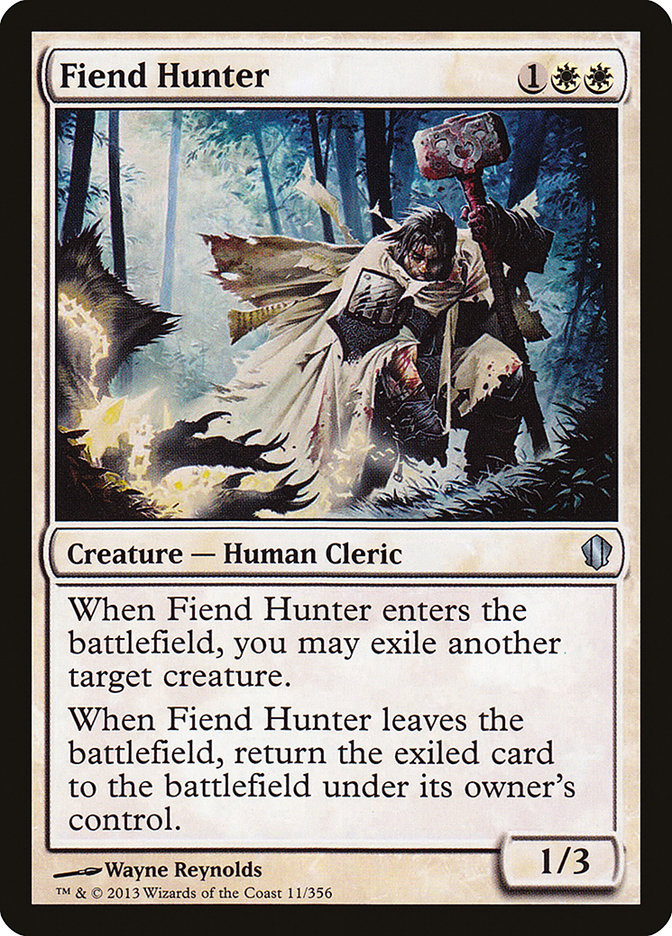Interaction: it’s one of the driving forces behind what makes Magic tick. Sometimes it’s as simple as using a Lightning Bolt on your opponent’s creature,
and sometimes it’s as complex as sacrificing your Mutavault to Hearthcage Giant to pump your opponent’s Cloudgoat Ranger and make sure your Phthisis is
lethal (yes, I’ve been there).
While most interactions aren’t as far down the “obscure” spectrum as the one I just mentioned, exceptional situations arise more often than you’d think.
Theros block Limited just so happens to host its fair share of these niche situations. Sometimes the only difference between a good player and a great
player is the ability to identify and exploit them.
A good player will not forget the Inspired trigger from their Arbiter of the Ideal. They might keep a reminder on top of their library to help them, but
you know that top card is getting revealed and potentially put into play.
What a good player might not remember is that the card enters play as an enchantment (it even comes into play with a manifestation counter on it to
represent this). Even if the Arbiter reveals a land from the top of your deck, it is going to trigger every single one of your Constellation abilities as
it enters play. Not to mention, if it is your opponent who is doing the manifesting you can now destroy whatever they put into play with enchantment
removal.
Multiple times throughout this prerelease weekend I saw people miss this very interaction. Once you think about it, it’s pretty straightforward. So why
were so many people missing it? The problem is people get hung up on the big picture.
“I get free stuff! Who cares if it becomes an enchantment!?”
Players will often read a card like Arbiter of the Ideal only once, prioritize the big splashy effect, and let the rest fade into memory.
Let me give you another quick example of this:
I kid you not when I say it took me until right before Born of the Gods came out to realize this card has trample. I know I read that it had trample when
it was first spoiled, but somewhere along the lines I got so caught up on the flash, flying, and life gain that the last keyword fell into obscurity. You’d
be surprised how many other pros also had their minds blown when I pointed out this seemingly obvious fact.
I know what you’re thinking.
“So you’re telling me Ordeal of Heliod is good on Akroan Skyguard? Really obscure, Frank.”
Before you scroll down to leave an angry comment, let me explain a situation I found myself in this past weekend:
I’m playing in a Journey into Nyx Sealed event with a scrappy B/W deck. It’s round one, and my opponent has a pretty killer U/W Heroic deck. We’re in the
middle of game 3 and things aren’t looking so hot. Although I’ve managed to run my opponent out of resources and stall the ground, he has a 3/3 Akroan
Skyguard that I just can’t seem to deal with. The turn before I’m about to lose, my salvation comes off the top of my deck: Ordeal of Heliod. After a brief
moment of deliberation, I put the Ordeal on my opponent’s Skyguard and pass the turn.
Although he was still able to attack me and make his Skyguard a 4/4 to boot, when the Ordeal was sacrificed I was able to gain ten life and buy some extra
time. One Lash of the Whip draw later and I got to walk away with the round one win.
Was it pretty? Of course not. It’s safe to assume that you’re not putting a card like Ordeal of Heliod in your deck with the intent of putting it on your
opponent’s creature just to gain some life. Thinking outside of the box like that might only come up one in every hundred games, but every percentage point
matters.
This has to be one of my favorite tricks in the entire format, if for no other reason than it works roughly 98% of the time. Flamespeaker Adept gets its
bonus whenever you scry. It doesn’t matter if the scry comes from a spell like Titan’s Strength, a creature like Sigiled Skink, or the humble card peeking
ability of one of the ten temples. For some reason though, people never see it coming when the temples are involved.
It usually goes something like this:
Main Phase: Play a temple, go about your normal scry business. Thanks to the new rules, you don’t need to announce a trigger until it becomes relevant to
the game, and in the case of Flamespeaker Adept that doesn’t happen until it is time to deal first strike damage.
Combat Phase: After you attack with your Flamespeaker Adept, one of two things will happen. The less fun one is you get to watch your opponent search the
board in bewilderment for an explanation when you announce they are taking four damage. The more fun version is you get to watch a similar scenario unfold,
except this time it involves your opponent blocking with a 4/4.
When is a 2/1 better than a 2/2? In Theros Limited the answer is quite often. Although you’re always going to want to start the vanilla 2/2 in your main
deck, don’t just throw Bronze Sable in your board and forget about it. Before Journey into Nyx hit the scene, there were three cards that would cause me to
swap out the Philosopher for the Sable in a heartbeat:
Bronze Sable’s ability to jump in front of any of these cards is something people tend to overlook that could easily be the difference between winning and
losing the game. Having one extra toughness is nice; being able to trade with an intimidate creature or provide a crucial chump block is invaluable. Bronze
Sable’s stock only goes way up with the introduction of Journey into Nyx.
With three new hard-to-block creatures in the format, picking up a Bronze Sable or two in the last pack might be something you want to do if your deck
lacks other interaction. It might seem odd classifying an almost vanilla 2/1 as a sideboard card, but the Sable does a job and it does it well.
Late last September I found myself in Worcester, Massachusetts battling my way through the StarCityGames.com Team Sealed Open with teammates Alec Nezin and
Joe Demestrio. We had constructed a pretty sweet U/W Heroic deck for Alec, topped off with everyone’s favorite Limited powerhouse – Elspeth, Sun’s
Champion.
I remember during round three looking over and seeing Alec in a pretty rough spot. Although he had just cast Elspeth, his opponent added a second Prescient
Chimera to the board that was poised to not only threaten Elspeth, but finish off Alec himself. I had to go back to playing my own game, and looked away
assuming that Alec was going to lose. Next thing I knew, Alec was shaking his opponent’s hand with a big smile on his face. So how did Alec’s deck
containing little to no removal manage to deal with both of the fliers?
Dauntless Onslaught, of course.
Alec had managed to chump block the 3/4 flier that could attack that turn, buying himself enough time to untap and use Dauntless Onslaught to pump the two
chimeras into range of dying to Elspeth’s -3 ability, wiping out his opponent’s offense and giving him time to take over the game. As the day continued, I
watched Alec use this same trick time and time again, with everything from Dauntless Onslaught and Battlewise Valor to Bestowing Observant Alseid onto his
opponent’s creature.
Normally I wouldn’t classify a strange play involving a mythic rare as worth mentioning due to how rarely the situation is going to arise, but Journey Into
Nyx’s new reprint of Reprisal makes the likelihood of this scenario increase greatly. The next time your opponent bestows something onto your 3/3, what
comes next shouldn’t be a big surprise.
Lately it seems impossible for me to get through writing an article without singing the praises of Necrobite.
This trick comes from the deck I drafted in the Top 8 of the
Somerville PTQ a few weekends ago. By now everyone has used their fair share of Time to Feed and Fall of the Hammer in conjunction with deathtouch
creatures to take down a giant monster. When it comes to using Necrobite with Labyrinth Champion, the same principle applies, although it is a little
harder to pull off.
Unfortunately, when you target Labyrinth Champion with Necrobite the initial heroic trigger is going to resolve before the 2/2 gains its new corruptive
touch. Fortunately, every subsequent spell you send the little guy’s way is going to produce a rather lethal death-shock. I was able to use this potent
combination during the PTQ Top 8, Necrobiting as a mid-combat trick to set up a Dragon Mantle in the second main phase to take out one of my opponent’s
larger creatures. While it may have required me to jump through a few hoops, the end result was well worth it.
Last but not least we have an unfortunate departure from cool/techy play brought about by Journey into Nyx. Like Banishing Priest before them, these two
cards represent a simplification of what used to be an obscure trigger ruling.
What do you notice that is different about these cards from the other two? They have two separate triggers, one for when they enter the battlefield and one
for when they leave. Fiend Hunter’s Gatherer ruling says: “If Fiend Hunter leaves the battlefield before its first ability has resolved, its second ability
will trigger and do nothing. Then its first ability will resolve and exile the targeted creature indefinitely.”
Thanks to this interaction, you used to be able to use bounce spells to effectively re-buy the effects of these cards. Things could even get really
degenerate when a card like Crystal Shard was involved.
The way the new cards are worded, they only have a single trigger, making it impossible to exploit the permanent exile feature of their predecessors.
Consider yourself warned: don’t try to do anything fancy with these cards. It will not work!
It is often said that top-tier Magic players seem to create wins out of thin air. Knowing exactly how every card on the field interacts goes a long way
towards explaining this phenomenon. That about covers the more obscure plays I’ve noticed so far playing my way through Theros Limited and I’m sure there
will be even more to come as Journey into Nyx sees more and more play.
Am I missing any big ones? What sweet plays have you pulled off lately?

